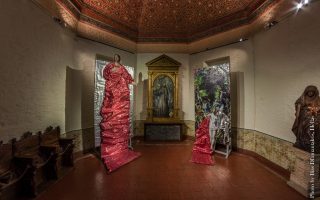The foustanella: From military uniform to symbol of a nation

Worn by the emblematic Greek Evzones, the foustanella has come to be understood as a symbol of valiance, bravery and resistance.
The history of the skirt-like garment has been written by the klephts (the brigands of the mountains), and the armatoloi (irregular soldiers commissioned by the Ottomans to enforce the Sultan’s authority), who later were to form the nucleus of the Greek fighting forces during the War of Independence against the Turks, by the Greek soldiers of the 1st Regiment Greek Light Infantry in British service (1810-12), which later became the 1st Greek Light Infantry (1812-16), by the soldiers (mostly from Mani or Roumeli) of the Light Infantry (1837-38), by the Greek legion in the 1853-56 Crimean War, by the Mylonas rifle-carrying Evzones (1874-77), by the Royal Guard detachment who, as elements of the regular infantry divisions, fought in the First World War, the Asia Minor Campaign and the Greco-Italian War.
The foustanella was also worn by the Greek rebels, or Makedonomachoi, in the series of social, political, cultural and military conflicts between Greeks and Bulgarians in the region of Ottoman Macedonia between 1904 and 1908, the Kavasides bodyguards of the Greek consulates, the Serdarides policemen on Mount Athos (as of 1906), the police officers on the island of Samos (from 1912), the Evzones of the Palatial Guard (from 1914), the guard battalion of the President of the Second Hellenic Republic (1924-35), and the Athens guards regiment (1938-41). It was also worn by Constantinos Koukidis, the Greek Evzone on flag guard duty on the Acropolis in 1941 who is said to have jumped to his death from the sacred rock rather than surrender to the German occupying troops.
As folk dancers and some schoolchildren prepare their foustanellas, scarlet fez caps, and leather tsarouchia shoes ahead of the March 25 Independence Day parades on Friday, the elite ceremonial Evzones unit is the subject of a special tribute in Athens. A total of 40 colored drawings of the Evzone uniform by painter and costume designer Yiannis Mylonas illustrate the historical evolution of what could be described as the quintessential Greek national dress from 1821 to this day, the different variations, and the conditions under which these were designed.
The exhibition opens on Monday at the ceremonial hall of the Presidential Guard (2 Irodou Attikou, admission free). It will run through April 3.
Prepared in cooperation with Thessaloniki’s Museum of the Macedonian Struggle, the exhibition is curated by Vassilis Nikoltsios and Stavroula Mavrogeni. The works belong to the private collection of Alexandros and Lena Haitoglou.
How could a costume that was never the subject of fashion designers or costume designers become Greece’s national dress? “It was the people. It was the regular, hardworking Greeks, the revolution fighters, the captains, who gradually elevated this uniform to the status of national dress,” Alexandros Haitoglou writes in the exhibition catalog.
From the Greek War of Independence to the war against the Italians and right up to the present, the Evzone uniform has always been a point of reference. It has adapted to geography and weather conditions. “The full-pleated all-white foustanella meets ancient Greek heritage,” Haitoglou says.
The historical milestones of the Evzone uniform are laid out by Marogeni, an assistant professor at the University of Macedonia, and painter Mylonas. They analyze some of the symbolisms attributed to aspects of the uniform, including the 400 pleats and white color, its evolution, its establishment as the official Evzone outfit in 1888 and the formal attire of the Presidential Guard in 1944 until the updated version of 2011.
A turning point in the establishment of the foustanella as a part of the Greek national dress was King Otto’s decision in 1836 to be photographed in one. This was the birth of an idealized image that would be cultivated by writers such as Nanos Valaoritis and Costas Krystallis and scholars including Andreas Rigopoulos. The Evzone would eventually come to be associated with the hero ideal in the Greek collective conscience.





